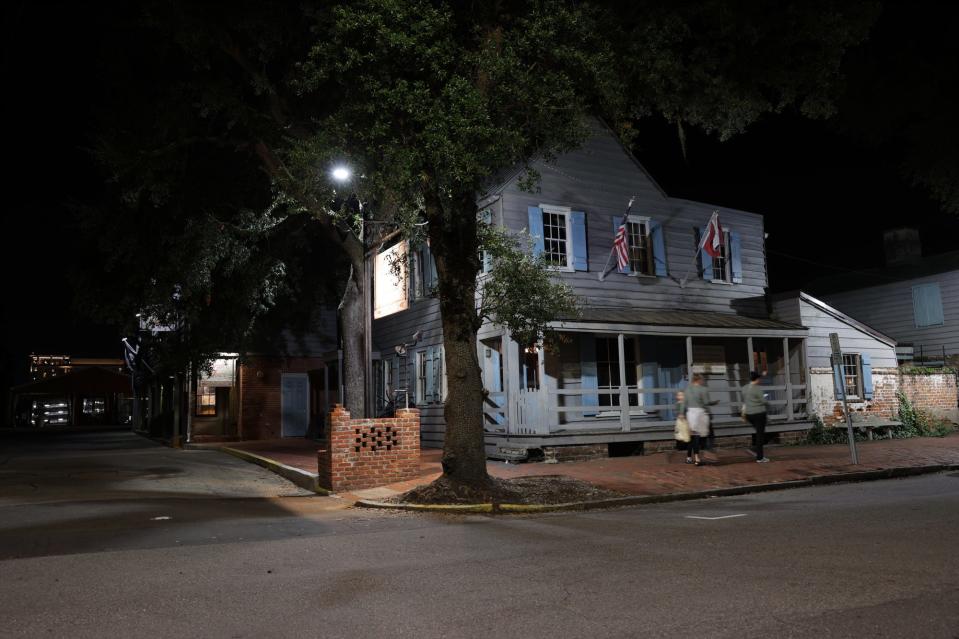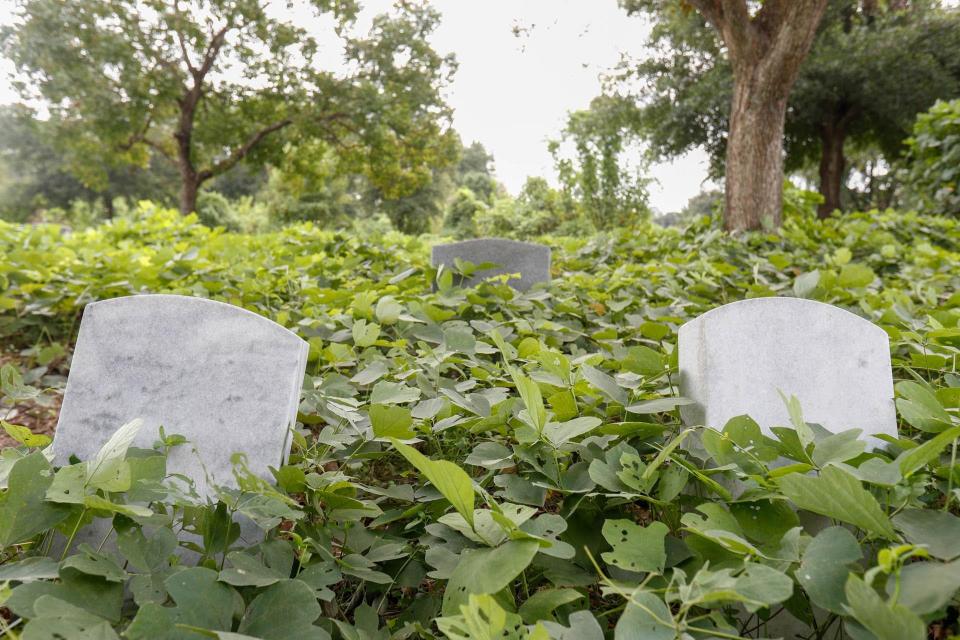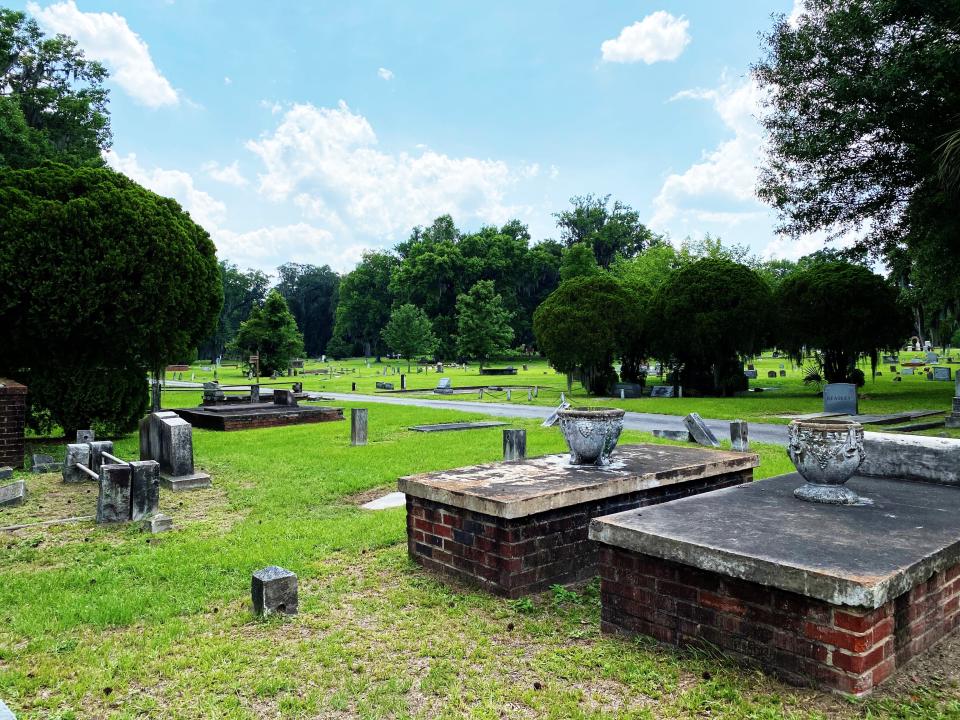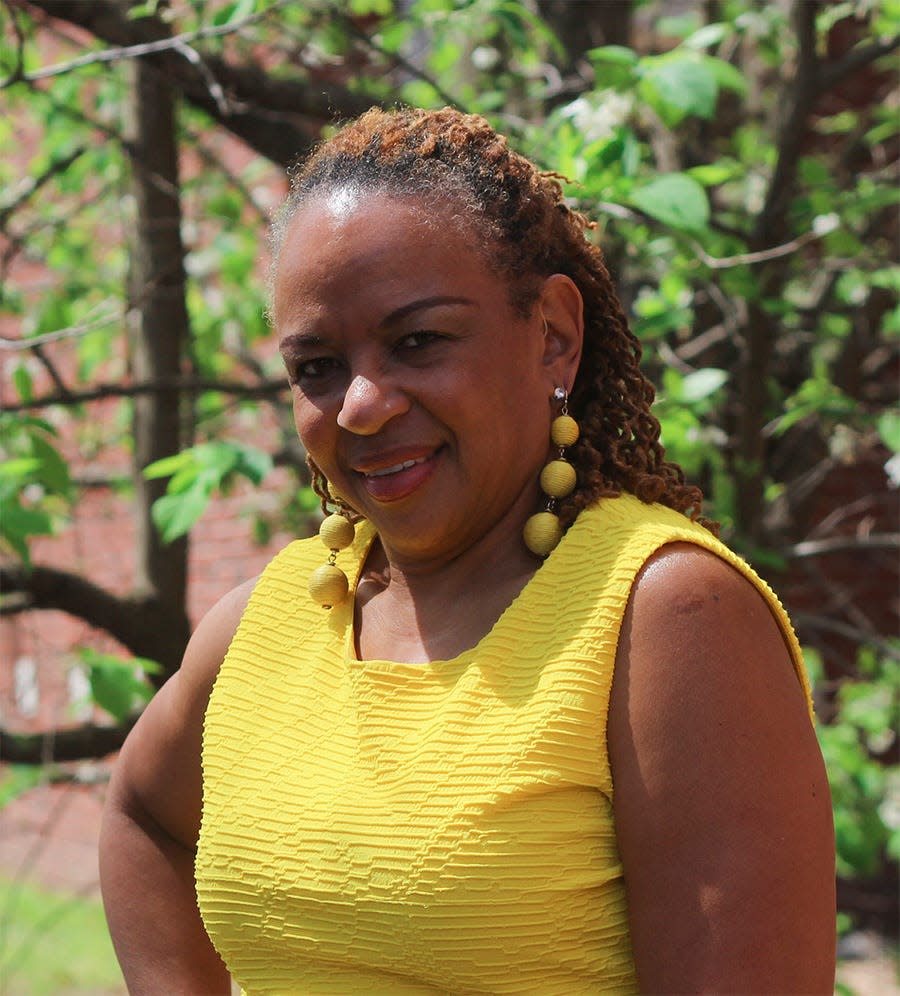Maxine L. Bryant: In search of Savannah's sacred Black burial grounds
Savannah is known for its tranquil beauty, its historic buildings and architecture, its good-tasting food, and its genuine southern hospitality. The Hostess City is also known for its haunted cemeteries.
Nearly 80 cemeteries are said to exist in Chatham County. Of that number, the City of Savannah owns and operates six of them: Bonaventure, Colonial Park, Evergreen, Greenwich, Laurel Grove North, and Laurel Grove South.
So what of the others? What sacred secrets lie beneath our beautiful grounds?
Savannah's sacred burial sites
Consider the sacred ancestral burial grounds for indigenous Native Americans, the Jewish population, and enslaved and freed Blacks. Native Americans occupied the land long before Great Britain established the Colony of Georgia in 1733 as the last of its original 13. Both the Jewish population and Africans had a presence in the Colony of Georgia from its beginning, although the first arrival of captured West Africans for the purpose of enslavement didn’t occur until 1766.
The Yamacraw tribe are the indigenous Native Americans who lived in the area when Gen. James Olgethorpe and the British arrived. They lived on Yamacraw Bluff near the Savannah River. They buried their dead in a Muscogee burial ground on the river's bank. According to an unnamed blogger in Savannah Terrors, the Yamacraw believed the bones of their ancestors contained remnants of the spirit. According to Chase Anderson, founder of Savannah Ghost Walks, the Yamacraw have at least two burial mounds and unmarked graves in downtown Savannah: the Trustees’ Garden by the Pirates’ House and under the parking lot of the Board of Education building near Chippewa Square. Anderson suggests that the desecration of these sacred native burial mounds by the English “could well have disturbed the spirits that haunt the bluff…”

Savannah reportedly has two Jewish burial grounds. One is a plot of land set aside by Oglethorpe just outside the city limits at that time on South Broad Street, what is now known as Oglethorpe Avenue. The area, now mostly paved over, has a historical marker. The second Jewish burial ground was commissioned by King George III and the Sheftall family near what is now Savannah Station. It still exists behind a brick wall, although many headstones have been stolen, leaving only 40 marked graves.
There is respected documentation about the locations of indigenous Native American burial grounds and Jewish burial grounds. It is interesting to note that at no time in Savannah’s history did the number of indigenous Native Americans or the Jewish population ever come close to the number of white settlers in the area. However, the opposite is true for captured and enslaved Blacks. According to Bryan Stevenson’s 2022 report on the Transatlantic Slave Trade, by 1790, enslaved Blacks comprised more than three-quarters of the population of Chatham County. In 1773, 15,000 enslaved Black people and 18,000 white people lived in the area. In Liberty County, enslaved Black people greatly outnumbered the colonists; there were 4,000 enslaved Black people and only 1,303 white colonists in 1790. With such a large population of Black people, it would seem that they would require significant amounts of land to bury their dead. Where are their cemeteries?
Sacred Ground: Family members do more than visit lost loved ones at Evergreen Cemetery. They maintain the graves.
"A new sunrise in Savannah": Susie King Taylor to replace Calhoun in downtown square

Where are the 'Negro burial grounds?'
According to a 2020 article in the Savannah Tribune by Tina Brown, the City of Savannah has erased the memory of African slaves and their descendants by forgetting its “Negro Burial Grounds." From 1763 to 1851, Negro burial grounds were the only legal places where enslaved Blacks could be buried. The city documented the locations of the graves until 1855 – after which they simply disappeared from city records.
These burial grounds for Savannah’s Black population originally were located on the outskirts of the city. However, as the city grew around them, they became historic squares located within the heart of Savannah’s Landmark Historic District, namely Calhoun and Whitefield squares. Some of the bodies reportedly were moved to Laurel Grove South Cemetery. However, there is no documentation of a mass removal of graves.

When the original Negro burial grounds were covered up, they were renamed for two white supremacists who supported the enslavement of Black people ― a blatant disrespect and dishonor to the Black people who built Savannah. Patt Gunn, New York photographer Lauri Lyons, and others successfully lobbied to change the name of Calhoun Square. The square will be renamed for Susie King Taylor, a formerly enslaved teacher and nurse and the only African American woman to publish a memoir of her wartime experiences. The unveiling of the marker bearing her name will take place at 1 p.m., Nov. 29.
There are at least two Negro burial grounds in the southside neighborhood of Coffee Bluff. One has remained intact for years and is called Cedar Grove. The other is a piece of land connected to Savannah Country Day School. Marla Perry, who has been nicknamed a 21st century abolitionist, has been championing for the land to be acknowledged as a Negro Burial Ground and protected as such.
Through her research, Perry has found documents that verify the existence of a Praise House near what is now the intersection of Cedar Grove Avenue and Merrydell Drive as recently as 1959. It is believed that the Praise House burned down around that time. History suggests that Praise Houses and cemeteries have a relationship as both weddings and funerals as well as praise services took place in Praise Houses. With no motorized transportation, it makes sense that cemeteries would be located near a Praise House.
November 2023 Tax Commissioner Summary by savannahnow.com on Scribd
After years of digging through related documents and interviewing local residents, Perry is convinced that the plot of land near the location of the known Praise House is an ancestral burial ground for deceased Blacks. Her conclusion is not unfounded. She shared with me a Tax Commissioner Summary from as recently as 2014 that identifies the parcel of land at the corner of Cedar Grove and Merrydell as Property Class E4- Cemetery. The owner is listed as Savannah Country Day School.
One of the local residents Perry interviewed is Craig Matthews, whose family moved to the neighborhood in 1969. Matthews told Perry that he remembers playing in the woods as a child. He said that area was “always known to have been a slave cemetery.” He shared that some older youth found “humped red clay looking things.” One of the adults did some investigation and learned the clay things were cemetery plot markers used by enslaved Blacks to mark the graves of their loved ones. Matthews' mother, who is in her 90s,recalls being told in 1969 that the “lot on the corner of Cedar Grove and Wellwood could not be sold because of it being a cemetery.”
Evidence from the documents uncovered by Perry and oral history from the people she interviewed strongly indicate that the sight is an ancestral burial ground. Further evidence may be the many small flat stones scattered throughout the plot of land which very well could be grave markers.
November 2023 Map by savannahnow.com on Scribd
Ancestral burial grounds are important across many cultures, specifically the Black culture. In many cases the sacred burial grounds are the final resting place for generations of family members. Such has been the case at the Houston Baptist Cemetery in Port Wentworth. The city of Port Wentworth was once home to the Rice Hope plantation and many enslaved Blacks were buried in the area. According to a WTOC report in 2022, a plan has been proposed to make Houston Baptist Cemetery a historic site because of the abundance of unmarked graves.
Perhaps the site unearthed by Perry can likewise be acknowledged. Perry has uncovered significant documentation that supports that the plot of land on the corner of Cedar Grove and Merrydell is the final resting place of enslaved Blacks. She has pictures of an abundance of stones that may very well be unmarked graves. Unlike at the Houston Baptist Cemetery, however, there are no known living family members who can attest to generations of their families being laid to eternal rest. There are, however, living elders of the community who insist that area was a burial ground for enslaved Blacks as well as Perry's documentation.

Perhaps this is an opportunity for Savannah Country Day School, the City of Savannah, and the local community to work together to find the truth and honor an ancestral burial ground. Several members of the Gullah Geechee community and members of Savannah City Council have visited the site with Perry and agree with her. I, too, have visited the site and concur with her findings. We have the opportunity to be the voice for the voiceless. We have an opportunity to promote healing and restoration for a community that is often met with silence, opposition and disregard. We have an opportunity to create a positive narrative for both the dead and the living.
Maxine L. Bryant, Ph.D., is a contributing lifestyles columnist. She is an assistant professor, Department of Criminal Justice & Criminology; director, Center for Africana Studies, and director, Gullah Geechee Cultural Heritage Center at Georgia Southern University, Armstrong Campus.
Contact her at 912-344-1248 or email dr.maxinebryant@gmail.com. See more columns by her at SavannahNow.com/lifestyle/.
This article originally appeared on Savannah Morning News: In search of Savannah's sacred Black burial grounds

